Disclosure: Meeple Mountain received a free copy of this product in exchange for an honest, unbiased review. This review is not intended to be an endorsement.
As a man of color, I’m always excited to preview content from designers and artists of color. When the editors of Meeple Mountain offered the chance to get my hands on Gold Seal Games’ upcoming game Book of Villainy, I jumped at the opportunity.
I will always try games that play under an hour and the rules for Book of Villainy made the game look very approachable. There’s a lot to like about the production, but it did leave one question on the table: in a game where you are asked to write chapters of a book to win, why is the writing such an afterthought?
In preparation for the Kickstarter launching in early June, I got Book of Villainy to the table a few times over the last two weeks to experience it for myself. Read on to gauge my thoughts!
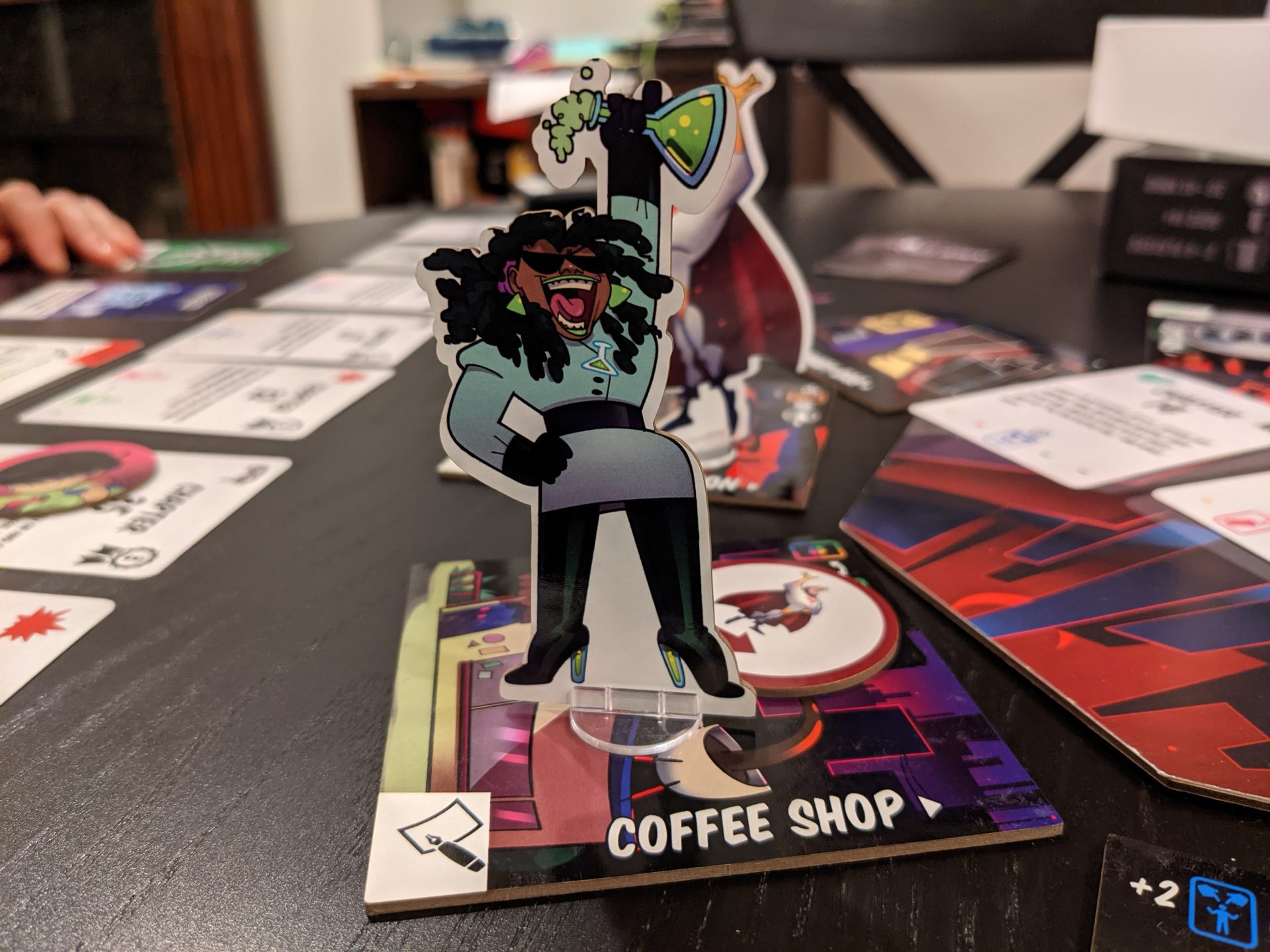
Despicable? Not Me!
Book of Villainy features a collection of B-list villains who will stop at nothing to write a book about their low-level criminal career. Over a series of turns, players will fill one of five available bad guy roles to walk around the city (the game board), gather henchmen (collect resources) and write chapters (spend cards to play those cards into your tableau). Whoever has the most points from chapter cards at the end of the game is the winner.
Turns in Book of Villainy are so straightforward that during my first four-player game, I had to remind one of the players that taking even more than a minute on a turn is borderline unacceptable! The board is a collection of eight tiles (or seven tiles in a 2- or 3-player game), representing locations in the unnamed city: a library, a post office, etc. The tiles are arranged around a small board that serves as the market for three face-up chapter cards at a time.
Each turn, you have to move your villain ahead clockwise one or two unoccupied spaces. When you move, you take one of two actions on the tiles: the Respectable action, which nets you a low-yield benefit (a single henchman, or a safe action such as the Write Chapter action), or the Despicable action, which nets you more henchmen cards, a chance to move chapters around in your book, or the chance to plagiarize another player’s written chapter (any chapter can be plagiarized by a single opponent at any time, which grants the plagiarizer the chapter number and any scoring symbols for end-game scoring).
When you add chapters to your tableau—there are 40 total chapters in the deck—you will place newly-added chapters to the left or right of the complete set of other cards already in the tableau. This will usually mean that a couple of your chapters will be out of order when you write them, so count on the need to take actions later to move chapters around using some of the tile actions (swap, or move a single chapter).
You can also play any number of henchmen abilities on your turn; these cards are mainly used to write chapters into your book, but they can also be used to move to occupied locations or in the case of the Lawyer henchmen cards, you can use two Lawyers to gain any single other henchman card. In our plays, we usually used henchmen to write chapters because that is what triggers the end game.
The last thing you can do on a turn is exhaust any number of Gadget cards; these give you special, game-breaking abilities, and you start the game with one Gadget. Gadgets can usually only be refreshed on the Secret Lair tile; new Gadgets can also be picked up at the Secret Lair instead of refreshing used Gadgets. (Criminals don’t buy things, so there’s no cost to adding gadgets when you go shopping!)
Complicating matters a bit (and I use the term “complicating” lightly, given the weight of Book of Villainy) is the Hero character. The Hero occupies one of the eight tiles throughout the game; players can move the Hero by landing on whichever tile currently has the Snitch token. After moving the Snitch token to the Hero’s current space, the player who landed on the Snitch moves the Hero to any tile other than the Secret Lair or the Library. If another player on the Hero’s new tile used that tile to take a Despicable action on their previous turn and has written at least one chapter, they lose henchmen based on the type discarded.
This gives Book of Villainy just a taste of “take that”, which I liked. (There is a downside to the Hero but we’ll get to that in a moment!)
Book of Villainy ends when one player has written their sixth non-plagiarized chapter, with the round ending so that everyone gets the same number of turns. Scoring is tied to a mix of the symbols that appear on each chapter card (whoever has the most money bag symbols gets a bonus, more varied heart/romance symbols gets a mix of bonuses, etc.) along with points for chapters appearing in your tableau in ascending order.
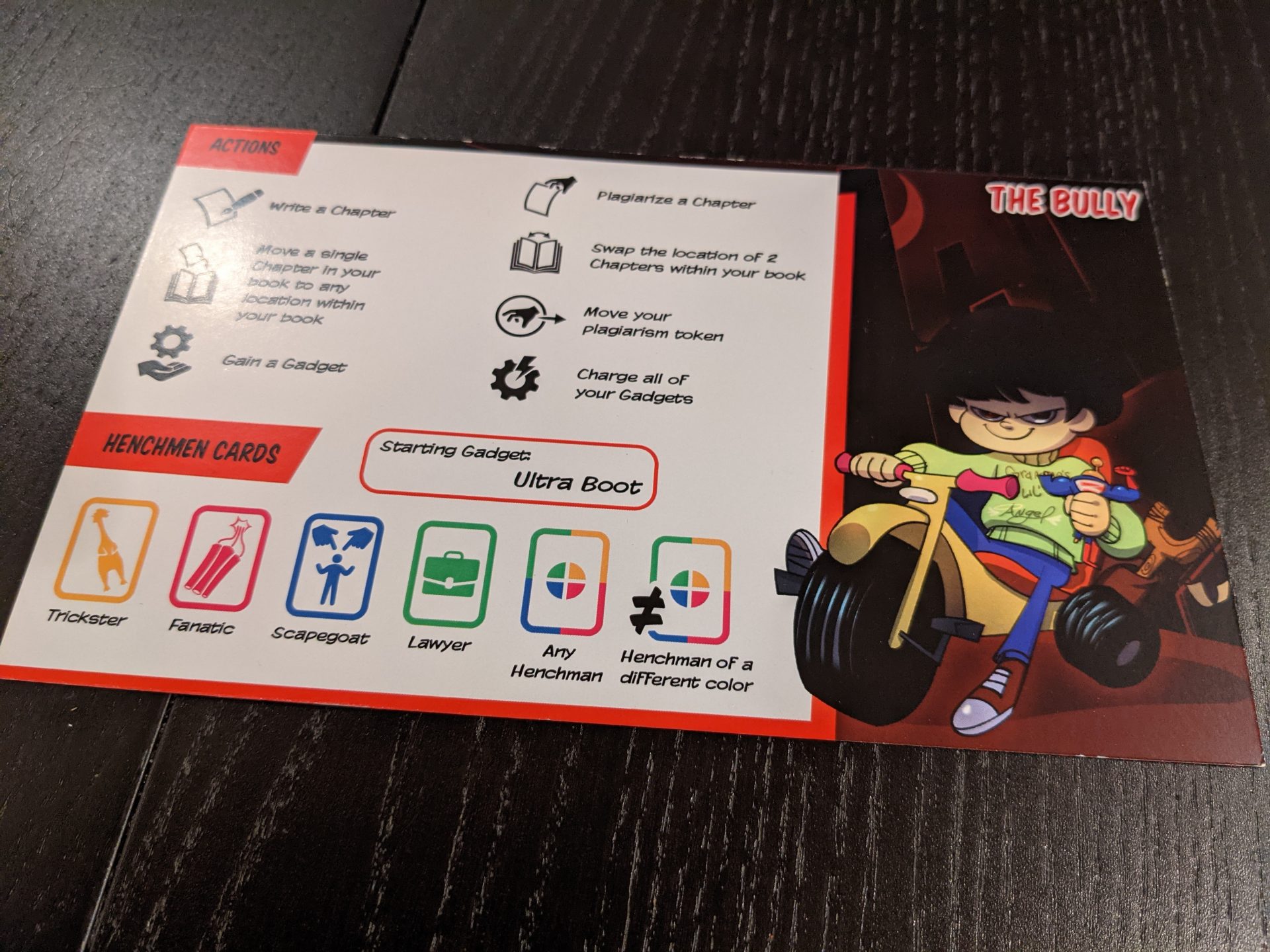
The Appeal
Book of Villainy is going to work well for many gamers. Turns are lightning-quick and the goal is always in clear view. Because of the scoring system, you’re really only tracking one card symbol across tableaus: who has the most money bag symbols, which appear on some of the cards and grant the end-game leader 10 points instead of one point for each of those cards. Everything else is a race to finish your sixth chapter before other players. It’s easy to see across the table who has their chapters in ascending order already, or who has multiple heart symbols and might be gunning to add a fourth color to get a bonus for variety. Some chapters are also worth a number of points straight up, a victory point number in a large medallion on some cards.
The decision space of which of two tiles to move to also makes Book of Villainy approachable for the game groups I play with where some players have really bad analysis paralysis; it’s almost not possible to overthink a turn. Plus, questions are easily answered with the very strong player aids; for our first game, I didn’t even teach the different actions available, because they are so well described on the front side of the player aid. (The back features end-game scoring, another excellent rundown that I referred to late in each game I’ve played so far.)
My wife calls games like Book of Villainy “beach games” because we are always thinking of portable, short, easy-to-teach experiences to share with our family, and Book of Villainy fits this description well. Although the game recommends ages 14+, Book of Villainy is straightforward enough for kids ages 10 and up who play games regularly.
Speaking of which, for my final play before writing this review, I wanted to get one more two-player game in with my wife. Then my four-year-old son had an accident, so my wife stepped away for just a moment to check on him. My seven-year-old daughter was standing nearby and wanted to take over for my wife.
“Can I play, Daddy?”
“Sure,” I said. “It will be a great test to see if a seven-year-old can play this game!”
So, we gave Book of Villainy a shot. I’m happy to say that it was a surprising success! My daughter didn’t really pick up how to best take advantage of the set collection aspects of the cards, but in terms of moving forward one or two spaces, taking the Respectable action versus the Despicable action, writing chapters by turning in matching cards to the market, and arranging chapters in order?
All of that worked very well. She loved the artwork on the henchmen cards and she loved how “cool” the player boards are. After this last play with my daughter, my thoughts on the game really changed in terms of the best audience for Book of Villainy.
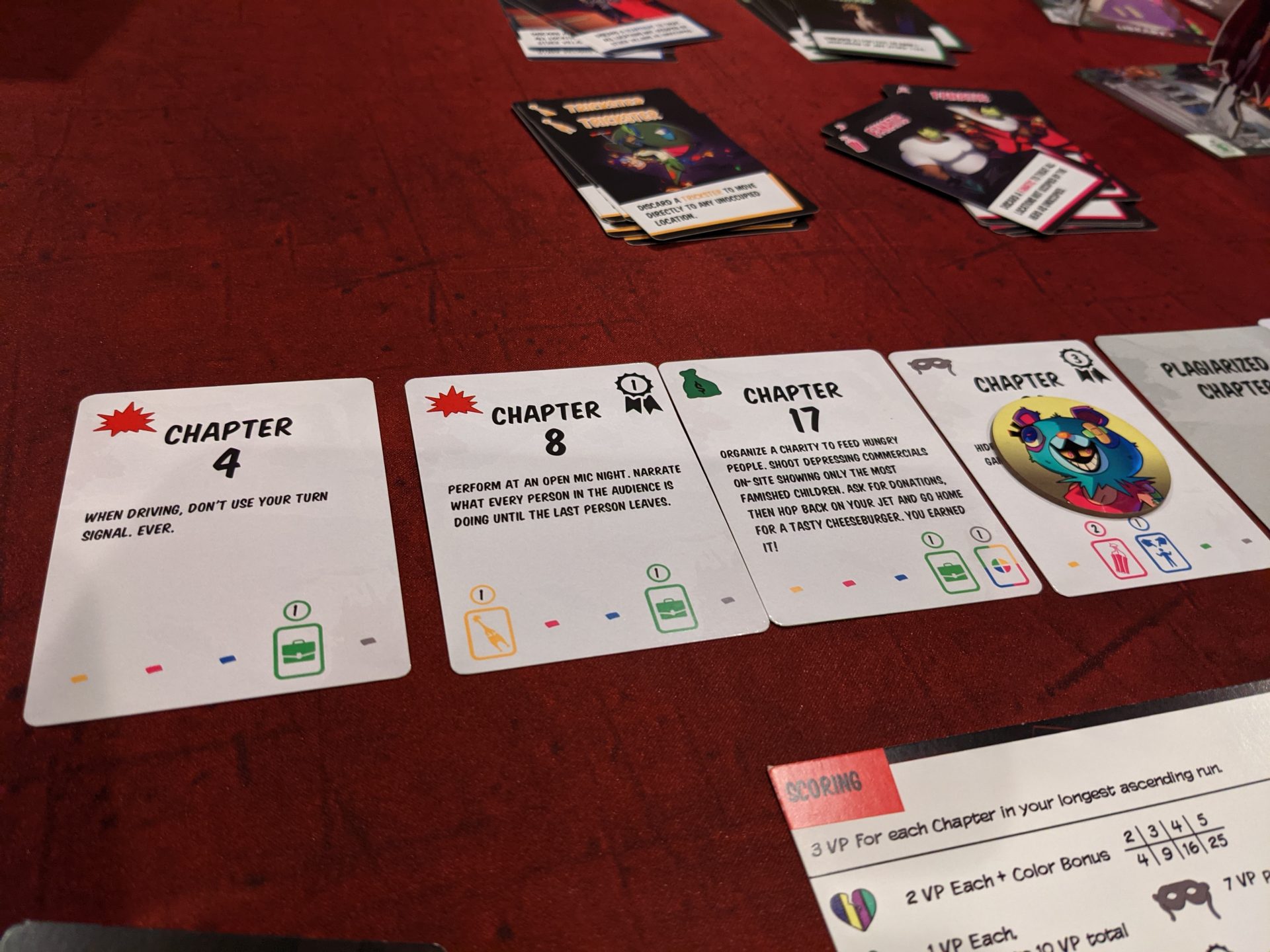
The Life of a Villain Isn’t Always Great!
The game does have a few issues. One strange negative has happened during each of my Book of Villainy games: no one has bothered to read the text on the chapter cards during gameplay. After a recent two-player duel with my wife, we took time to read the text in our final tableaus; sadly, the writing isn’t great, only a few of the cards produced a chuckle, and if you happen to have your chapters laid out in order by game end, the tableau doesn’t really produce anything interesting when in chronological order.
I would have loved to see the final tableau for each player read like a funny, criminal Mad Libs story. (The game is called “Book of Villainy” after all, right??) But you don’t get that here. This is a game, a set collection game with scoring mechanics, period. It’s an enjoyable experience, but Book of Villainy never gives you the feeling that you really are writing a funny, B-list criminal book; you are gathering wood, ore—
JUSTIN, WAIT. I THINK YOU MEAN “SCAPEGOAT” AND “FANATIC” CARDS.
—ahh, right, you are gathering Scapegoat, Fanatic, and other “henchmen” to buy, er, write, chapters from the market. I don’t think this is necessarily bad, but I think it’s a missed opportunity to have a product that stands apart from, say, Lords of Waterdeep, Everdell, or a thousand other games that ask players to run around town, grab resources, and complete missions/buy cards from a shared market.
Given the heat index on comic book and illustrated intellectual property right now, Book of Villainy could lean into that with something more profound, funnier, and/or more interesting to say. (That said, the writing works really well for kids, because my daughter had more fun reading the cards than any of the adults did.)
One other issue we had with Book of Villainy, especially with a full four-player count: the Hero is more of a liability than an asset. We had multiple rounds where the Hero moved every turn. The Snitch token does not block tiles, so players will land on it often; remember, you can only move one or two spaces ahead, and the Snitch will never be in the Secret Lair or the Library (the two places where the Hero can’t move), so it will always be on one of the six remaining tiles.
There’s a chance that a runaway leader will never be able to use a tile’s Despicable actions late in a game because they will be targeted by other players on almost every turn at full player count. This hinders any ability to hold onto many henchmen to write chapters; that won’t be much fun as a reward for standing on the precipice of victory. It also slows the game down to possibly give every other player a built-in catch-up mechanism.
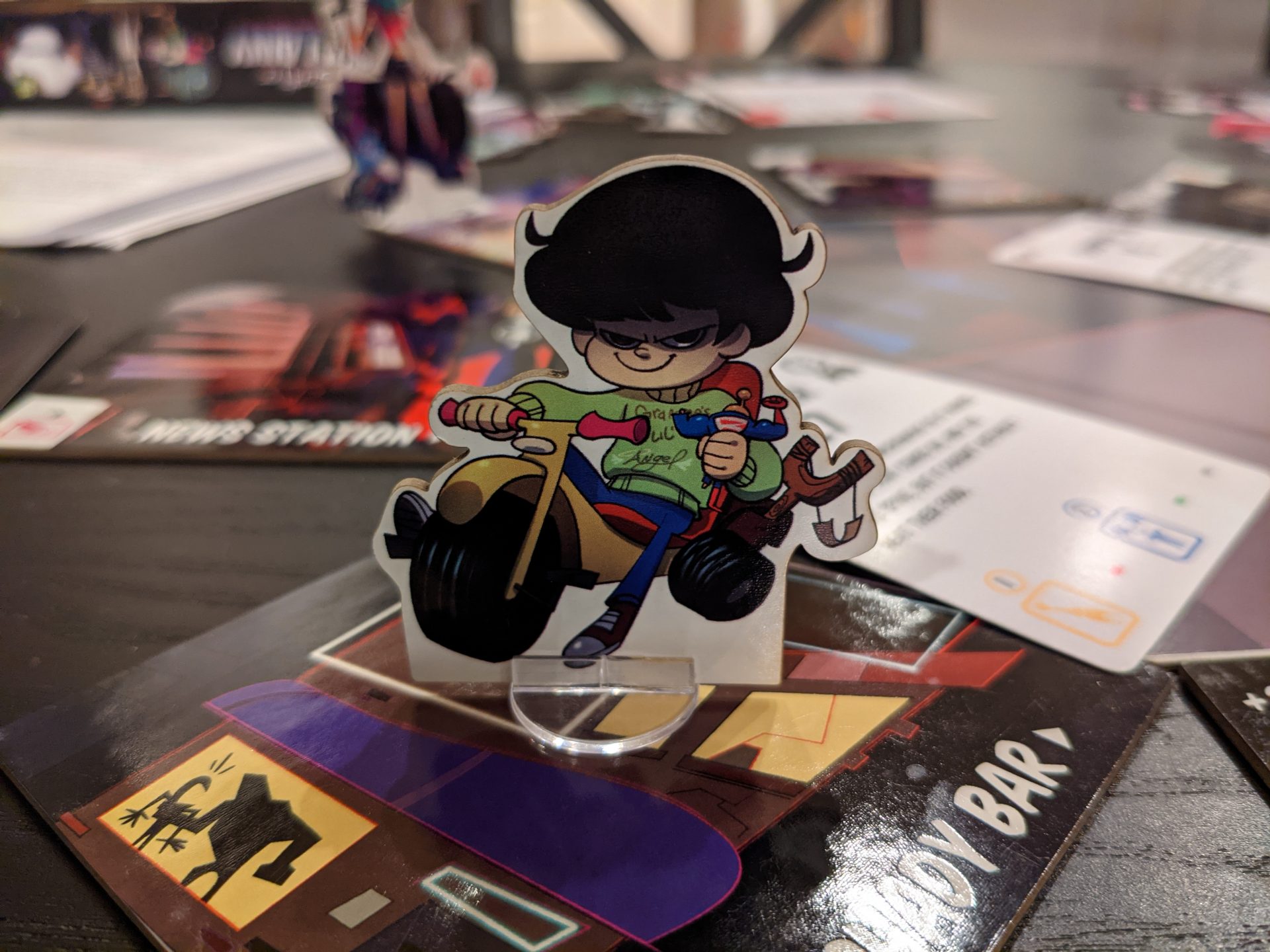
It’s Good to Be Bad
Book of Villainy is fun. It’s a light filler that features just enough variability to be interesting over multiple plays and I will likely be able to get this to the table for all audiences. I think there is a missed opportunity here with the chapters, flavor text, and being able to share a great narrative with your game group. Also, my prototype copy had a few issues to clean up, so I’m excited to see how the final version of the game shakes out (ideally, sturdier player boards and standees, a larger game board, more gadgets, etc.).
But for a 30-minute race to collect cards, Book of Villainy has art that resonates with my personal tastes and broadly-entertaining gameplay that satisfies me. And now that I’ve played the game with my daughter, I think the best way to play this would be as a 2- or 3-player game with parents and a child, or comic-loving teenagers looking for a quick game before catching the next Marvel movie in theaters.
This might be in my beach bag this summer!


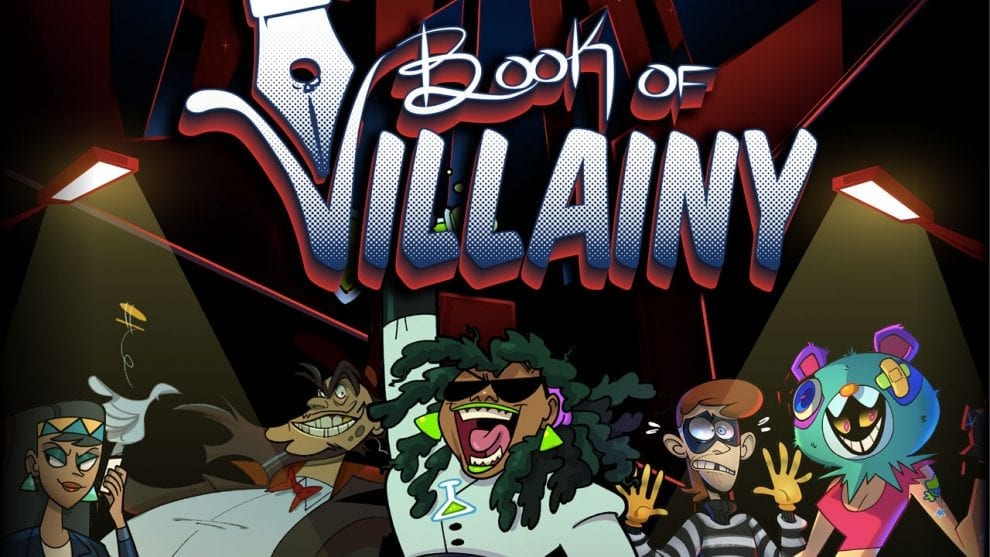



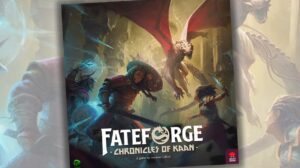




Add Comment